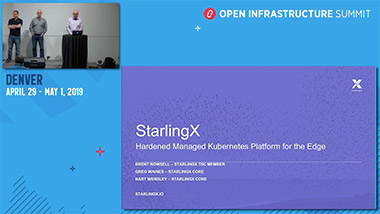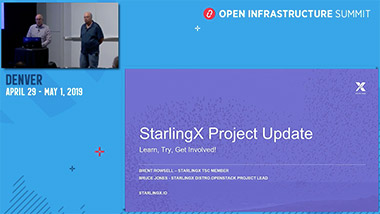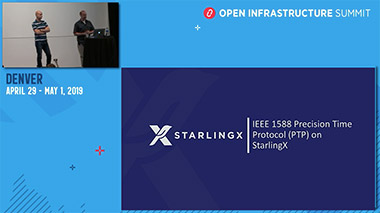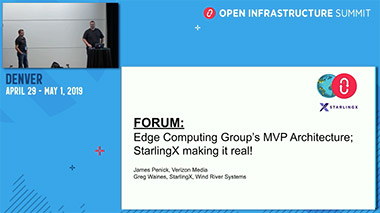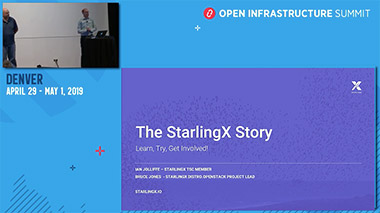StarlingX Sessions from
Open Infrastructure Summit 2019

StarlingX was a hot topic at this year’s Open Infrastructure Summit, with more than 15 sessions including some discussion of the open source project. A possible reason for this interest is best illustrated by one of the keynote speakers, who mentioned that one of the StarlingX contributors wanted to do a competitive analysis of StarlingX vs. “the other projects that provide a hardened edge cloud and … then realized, there are no comparisons.”
To understand some of the reasons why, take a look at some of the recorded sessions below, or contact us directly.
Contact Us
StarlingX: Hardened Managed Kubernetes Platform for the Edge
StarlingX has evolved to provide a hardened managed Kubernetes platform targeted for edge computing.
- Integration with StarlingX platform services for deployment and lifecycle management of the Kubernetes cluster
- Integration with OpenStack Keystone for authentication/authorization
- The StarlingX one- and two-node solutions, two-node master implementation, and integrated Ceph cluster.
Optional deployment of a containerized OpenStack application on top of this hardened Kubernetes platform for hosting VM-based applications is also covered.
The presentation is followed by a demonstration of the platform capabilities.
Precision Time Protocol (PTP) on StarlingX
StarlingX is a complete cloud infrastructure software stack for the edge used by the most demanding applications in industrial IoT, telecom, video delivery, and other ultra-low-latency use cases. In order to meet these use cases, StarlingX has an integrated solution for supporting the IEEE 1588 Precision Time Protocol (PTP) as the primary clock source to provide sub-microsecond accuracy to the application. This presentation and demo shows the PTP deployment architecture and demonstrates the clocking accuracy within StarlingX.
Edge Computing Group’s MVP Architecture—StarlingX Making It Real!
While the definition of edge computing might still need some clarification throughout the industry, we all agree that there will not be a one-size-fits-all solution to fulfill the requirements of every use case under this category.
During this talk you will learn about the background and current stage of the MVP reference architecture work and get a preview of what comes next. To connect this activity to the real world, you will also learn how StarlingX adopted the ‘Distributed Control Plane Scenario’ of this architecture and the ongoing work items to fulfill the requirements it demands.
Getting a New Open Source Project off the Ground: The StarlingX Story
The StarlingX project was launched a short year ago. The community has made tremendous progress in establishing governance, delivering a first release, and forming a community of contributors. We have much more to accomplish as a community, but this talk will focus on the lessons learned over the first year and how we plan to grow the community going forward.
The audience will come away with ideas about what to do and what not to do during the early life of a project, along with ideas on how to have some fun along the way.
